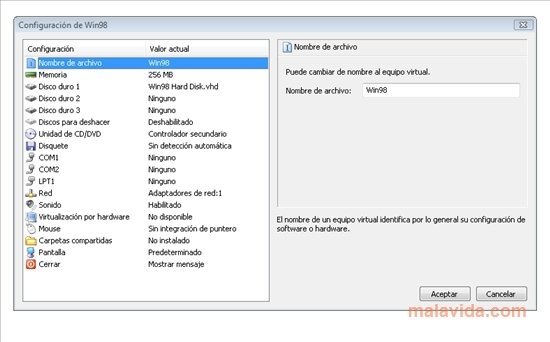

- Download virtual pc for windows 8.1 64 bit for free#
- Download virtual pc for windows 8.1 64 bit pdf#
- Download virtual pc for windows 8.1 64 bit install#
- Download virtual pc for windows 8.1 64 bit drivers#
- Download virtual pc for windows 8.1 64 bit software#
The installation should look pretty familiar to you if you have installed any Windows version manually before, in particular Windows 7 of course.Īfter setting up the basic language and keyboard options and accepting the license terms, you should select to do a custom install: Now you're ready to power on the virtual machine using the "Start" option from the toolbar. Of course you want to boot off of the DVD image you've downloaded from Microsoft, so the final step is to set this up on the "Storage" tab:Ĭhoose the developer preview ISO file you've downloaded. One thing that could be helpful is to turn on acceleration for 2D and 3D graphics:

Download virtual pc for windows 8.1 64 bit drivers#
For example, make sure that the I/O APIC option is selected:Īlso, make sure that the network adapter type is set to Intel, as there are no 64-bit drivers for the other ones: configuring the place snapshot data should be saved to, the number of CPUs and other convenient parameters, there are some vital options that you should inspect to make sure they're set up correctly. Configuration of the Virtual Machineīefore you go ahead and start installing Windows 8 into the machine, first make sure that it is configured correctly.
Download virtual pc for windows 8.1 64 bit pdf#
Finishing the wizard creates the hard disk, which may take a while for 50 GB - a good time to read more of the developer guide PDF Microsoft provides for the preview :). Again I'm someone who likes to be on the safe side, so I used 50 GB: Regarding the disk size, the recommended free space is 20 GB for the 64-bit version of Windows 8. I'm not sure if it would've made any difference to use the VirtualBox default format.įor virtual hard disks I use fixed sizes, which should be faster than using the dynamic allocation and speed is a very important factor for something as resource hungry as virtualization. I chose VHD as format for the disk, which is the standard format Microsoft uses. Step three involves setting up a virtual hard disk for the machine. Since I want to do some development experiments, which means running Visual Studio and Blend, I upped that to 4 GB: The recommendation for the Windows 8 developer preview is 2 GB for the 64-bit version (as found on the download page). The next screen allows you to set the amount of memory (RAM) you want to allocate for the machine. Since VirtualBox has no official support for Windows 8 yet, go ahead and choose "Windows 7 (64-bit)" from the drop-down list: VirtualBox launches a step-by-step wizard for this that guides you through the process of configuring the individual aspects of that machine. The first step in the setup is to create a virtual machine that hosts Windows 8.
Download virtual pc for windows 8.1 64 bit install#
Please note that you will be prompted several times to install drivers required by the software. Installation of it is straight forward using the wizard that comes with the installer.

Download virtual pc for windows 8.1 64 bit for free#
Then of course you need to have VirtualBox installed, which you can get for free from here. There are several choices, but since we want to develop applications and use the fancy new tools like Visual Studio 11 and Expression Blend 5, use the 64-bit package with developer tools. Getting startedįirst of all, if you haven't done this yet, go ahead and download the developer preview.
Download virtual pc for windows 8.1 64 bit software#
That seemed a logical choice unless you downloaded the 32-bit version of Windows 8 (don't you dare! No development tools! :)), you need a virtualization software that supports 64-bit guest operating systems, and VirtualBox - in contrast to e.g. However, there also were a few success messages for the latter one, so I decided to try VirtualBox first. During the download, I had enough time to read through a lot of tweets from people with failed attempts to install it in virtualized environments, including Virtual PC, VMware, Parallels and VirtualBox. I wanted to use it in a virtual machine first to play around with it before I proceed with installing it on real hardware. So, after getting up in the middle of the night to be among the first to download the developer preview of Windows 8, the question was where to install it to once it was downloaded.


 0 kommentar(er)
0 kommentar(er)
